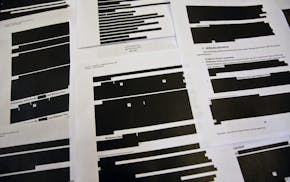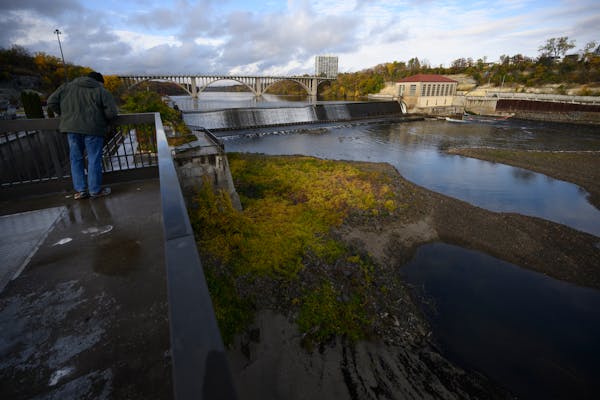Mayors along the Mississippi River are asking for more federal help as the drought that has plagued the nation's water superhighway in recent weeks drags on.
City leaders shared wide-ranging impacts of dry conditions at a Tuesday news conference hosted by the Mississippi River Cities and Towns Initiative, from barge slowdowns to water main breaks caused by shifting dry ground.
With relief from snowmelt across the upper U.S. still months away and future rainfall predictions tenuous, those tasked with keeping barges moving said they're doing their best but could use more help the next time drought strikes.
"Low water can have as great a cost, or greater, than high water," said Jim Strickland, mayor of Memphis, Tenn., where river levels reached a historic low at the end of October. "We have all these tools at our disposal for floods, but very few for droughts."
The Mississippi River is a major thoroughfare for goods traveling across the U.S. and globally. The basin produces 92% of the nation's agricultural exports and nearly 80% of the world's exports in feed grains and soybeans. Nearly two-thirds of all grain exports from the U.S. are shipped on the river.
It's also the country's largest drainage basin, and drought conditions are sweeping the U.S. More than half of the Upper Mississippi River Basin and more than 90% of the lower basin are currently in drought, some of which is extreme, according to data from the U.S. Department of Agriculture's Midwest Climate Hub.
That means less water is flowing into the river, slowing shipping traffic and causing troubles for farmers and others in the basin.
At a port near Greenville, Miss., a barge ran aground Oct. 30, causing a backup of approximately 80 boats and 1,000 barges, Lt. Phillip VanderWeit, a public affairs officer with the U.S. Coast Guard, said Tuesday.
Barges are also carrying 40% to 50% less cargo, said Paul Rohde, vice president of the Midwest Area of the Waterways Council, a trade association of carriers and shippers. At its worst backup a few weeks ago, there were 150 boats and 2,200 barges stalled along the river, Rohde said.
Though basin residents may not immediately feel the impacts, as they may have during supply chain slowdowns caused by the COVID-19 pandemic, officials said the delays will be significant.
"We are going to be desperate for road salt for our winters," Rohde said.
Beyond shipping troubles, the drought is causing other problems in the basin.
Stacy Kinder, mayor of Cape Girardeau in southeast Missouri, said the city experienced a major water main break in October due to dry ground, jeopardizing water quality for residents.
Water lines and pipes in northern states could start to freeze if dry conditions persist after the soil freezes, said Dennis Todey, director of the USDA's Midwest Climate Hub. For many cities that had to do costly water infrastructure repairs due to flooding in 2019, the drought could again put it at risk — another signal that the two climate extremes are inextricably linked.
And in New Orleans, where the river empties into the Gulf of Mexico, saltwater is pushing upstream as river levels drop, threatening municipal drinking water.
The Mississippi River mayors' group, which is made up of more than 100 municipal leaders across the basin, is pushing for national policy to handle future droughts — which could get longer, more frequent and more severe as the climate changes.
They want federal disaster declarations given to states in drought; policies that allow cities to spend Federal Emergency Management Assistance dollars on drought; compensation for farmers for voluntarily moving land out of irrigation and spending priorities focused on drought mitigation, among other changes.
When the drought will subside is uncertain. Over the next month, much of the basin is forecasted to be warmer than average, meaning evaporation will be a persistent problem, Todey said.
The country is in a La Niña climate pattern, causing drier, warmer weather conditions in the south and colder conditions in the north. The upper Midwest east of the Mississippi could see more snowfall this winter, potentially relieving the Ohio River tributary, according to the Midwest Climate Hub forecasts. But it's unclear whether precipitation will be higher or lower in the Plains region, meaning a more uncertain path to recovery.
"It's going to take several rainfalls to be able to start resolving this," Todey said.
This story is a product of the Mississippi River Basin Ag & Water Desk, an editorially independent reporting network based at the University of Missouri School of Journalism in partnership with Report For America and the Society of Environmental Journalists, funded by the Walton Family Foundation.

Want to share info with the Star Tribune? How to do it securely

'Safe recovery sites' would offer syringes, naloxone and more to people using drugs. The plan could be in peril.
New Minnesota GOP leaders seek peace with party's anti-establishment wing

Who is Republican Lisa Demuth, Minnesota's first House speaker of color?

